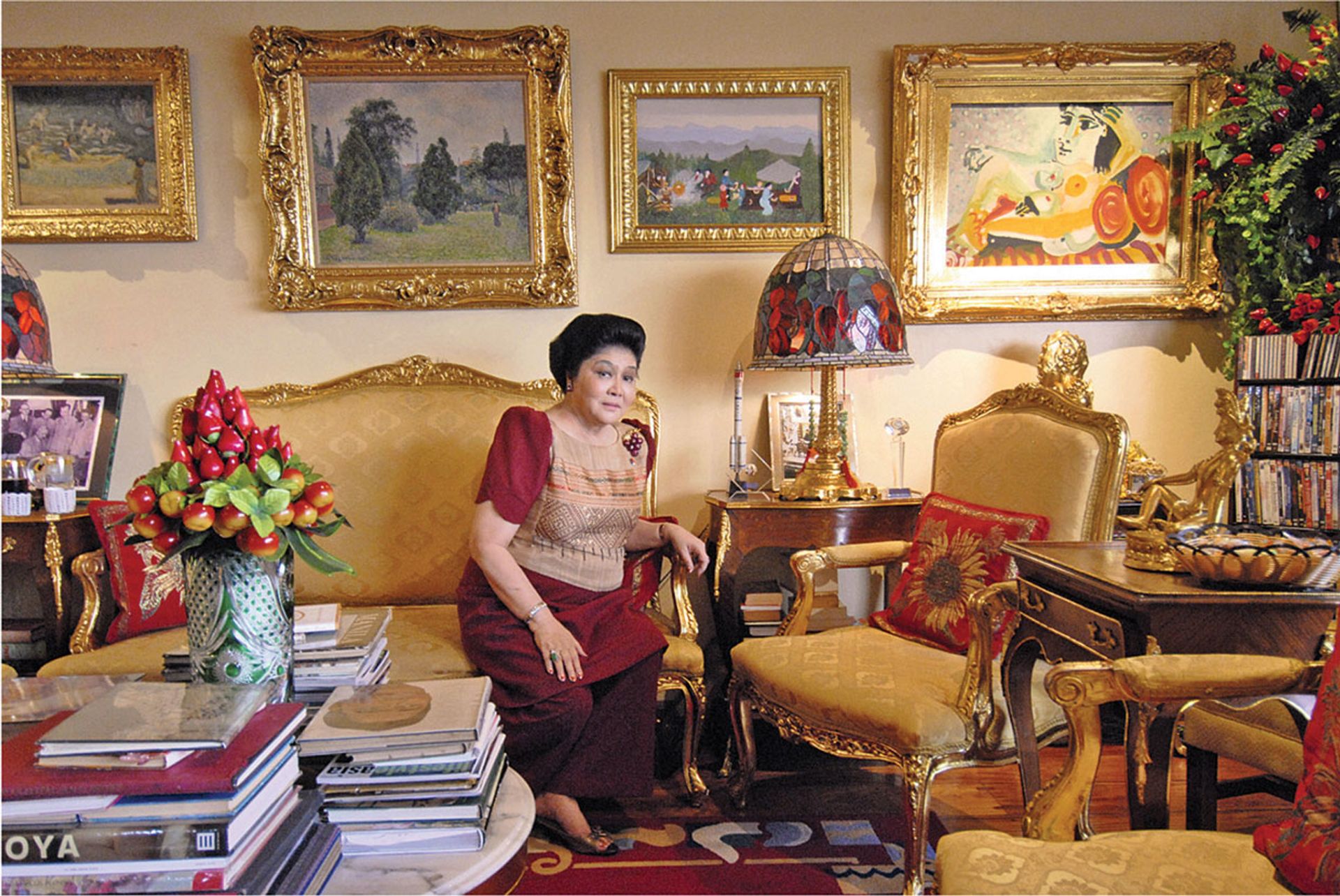The Long Read
Book Club | From Modigliani to Imelda Marcos, museum thefts to market machinations: investigative reporters present an arresting story of art crimeby Ben Lewis |  |
From Modigliani to Imelda Marcos, museum thefts to market machinations: renowned German investigative reporters present an arresting story of art crime
The authors’ overview of the types of art crime includes serious analysis—and some entertaining tales
Wrong footed: Imelda Marcos, the former First Lady of the Philippines, was duped into buying dozens of misattributed and copied works by the art dealer Adriana Bellini© Romeo Cacad/AFP via Getty Images; from Art & Crime by Stefan Koldehoff and Tobias Timm
Art & Crime, the new book from Germany’s leading art world investigative reporters, is a clearly organised, sharply written and engaging addition to the genre of art-market crime compendiums. The litany of crimes dealt with chapter by chapter—looted antiquities, Nazi plunder, art washing, fraud, museum thefts, money laundering—will be familiar, but the book had a particular fascination for this reviewer on account of its slant towards German market stories, less well-covered in the US and UK press.
There is an enthrallingly detailed account of the misdemeanours of Germany’s pre-eminent art adviser, Helge Achenbach, who drove Joseph Beuys’s Bentley and dealt in Gerhard Richter, Pablo Picasso, Jörg Immendorf and Andreas Gursky. Comparable to the “freeport king” Yves Bouvier, Achenbach sold works with massive mark-ups by misleading the collectors about the price he had himself paid. In 2014 he was convicted of swindling the billionaire Aldi supermarket heirs, sentenced to six years in prison and ordered to pay them $21.9m in damages.
Art & Crime is not all German material. A marvellous section on the Amedeo Modigliani market tracks the creation of forgeries, and the spats over catalogues raisonnés created since the artist’s death, drawing attention to the absurd situation where the catalogue authors have a financial interest in the market for their subject. The topic begs for a book in its own right and is emblematic of the conflicts of interest and lack of independent scrutiny that plague the art market.
Koldehoff and Timm are arguably a little too cautious about naming and shaming, using only the surname initial of those accused or convicted of art crimes, but they do not pull their punches when they lambast the art market for its opacity, deceptive commercial conventions and resistance to regulation, all backed up by art world “Omerta”, in their words “this weird collective spirit in the art world.” Nor are they shy to point out the responsibility of public institutions as well as criminals for art crime. Thefts from museums are all too easy with feeble security and, on occasion, institutions have even turned a profit on stolen artworks, cashing-in the large insurance premium for the missing work only to get it back with a considerably smaller ransom payment.
Imelda Marcos was conned into buying 60 misattributed, later copies and “school of” pictures
There is an entertaining chapter on former First Lady of the Philippines, Imelda Marcos, whom, I had almost forgotten, deployed the classic art-washing playbook of the oligarch/kleptocrat and was conned into buying 60 misattributed, later copies and “school of” pictures by the Italian art dealer Adriana Bellini. One hundred works she collected are still missing. The chapter on Donald Trump is even better, notably his well-worn collector sleights-of-hand, performed with even less taste and grace than usual: buying art through his charitable foundation, bidding up works of art he has a stake in—portraits of himself, rather than artists he collects—and acquiring large numbers of fakes. Fake news, fake art! In the early 1980s Andy Warhol painted some pictures of Trump Tower, but the mogul turned them down. Warhol wrote in his diary: “I just hate the Trumps because they never bought my Trump Tower portraits.”
In their conclusion, Koldehof and Timm gamely suggest the ten questions art-market participants should ask themselves if they want to help clean up the art world—verifiable provenance, below-market price, identity of seller etc—but all this can be boiled down to one simple global regulatory reform: just treat art like any other financial asset or instrument.
• Stefan Koldehoff and Tobias Timm, translated by Paul David Young (First German edition Verlag Kiepenheuer & Witsch, Cologne 2020), Art & Crime: the Fight Against Looters, Forgers and Fraudsters in the High-Stakes Art World, Seven Stories Press, 416pp, 8 pages of colour illustrations, $35/£26 (hb), published US 11 January, UK 27 January
• Ben Lewis is a cultural critic, historian, creator of the art and crime podcast Art Bust and the author of The Last Leonardo: the Secret Lives of the World’s Most Expensive Painting (Harper Collins 2019)



No comments:
Post a Comment